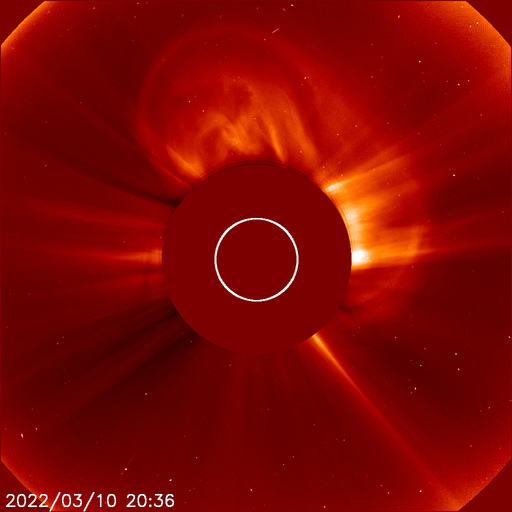Space Weather Alert - 11th March 2022
What Has Happened?
An Earth-directed full halo Coronal Mass Ejection (CME) lifted off from the Sun, peaking at approximately 20:30 UTC on the 10th of March. The CME is travelling at speeds above the background solar wind and it is estimated to arrive at Earth late on Sunday 13th or early on Monday 14th March. This CME is expected to cause a significant disturbance to the geomagnetic field, making periods of STORM conditions likely.
Assuming clear, dark skies, there is a greater chance of seeing the aurora. Those in Scotland, northern England and Northern Ireland have a better chance, if the weather is favourable overnight on 13th and 14th March.
The arrival of this CME is expected on the 33rd anniversary of the infamously named "Quebec Blackout" geomagnetic storm in March 1989, which resulted in power outages in Canada as well as auroral activity in lower than usual latitudes.
Sign-up to receive Geomagnetic Disturbance Alert emails.
Follow us on Twitter:
Follow @BGSauroraAlert for more occasional aurora alerts.
Follow @BGSspaceWeather for daily space weather forecasts.
Glossary
- BGS
- The British Geological Survey is one of the Natural Environment Research Council's Research Centres.
- CME or Coronal Mass Ejection
- The eruption of a portion of the outer atmosphere of the Sun into space, caused by rapid changes in its magnetic field. Often occurs along with a solar flare.
- Solar Flare
- Energy released by the explosive reorganisation of magnetic fields within the Sun's atmosphere.
- Solar Wind
- The ever-present expansion of the Sun’s hot outer atmosphere into the solar system, which carries space weather within it.



